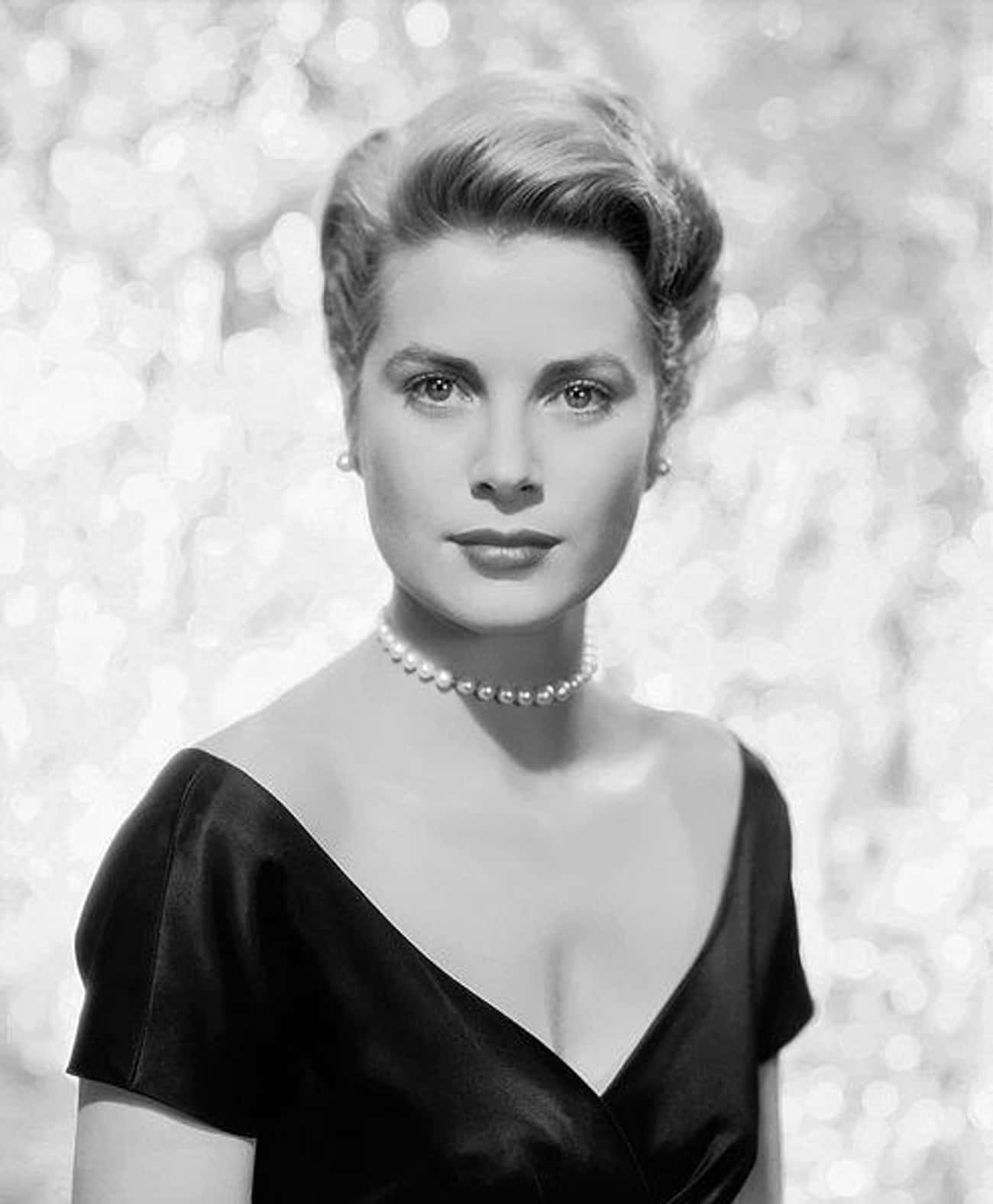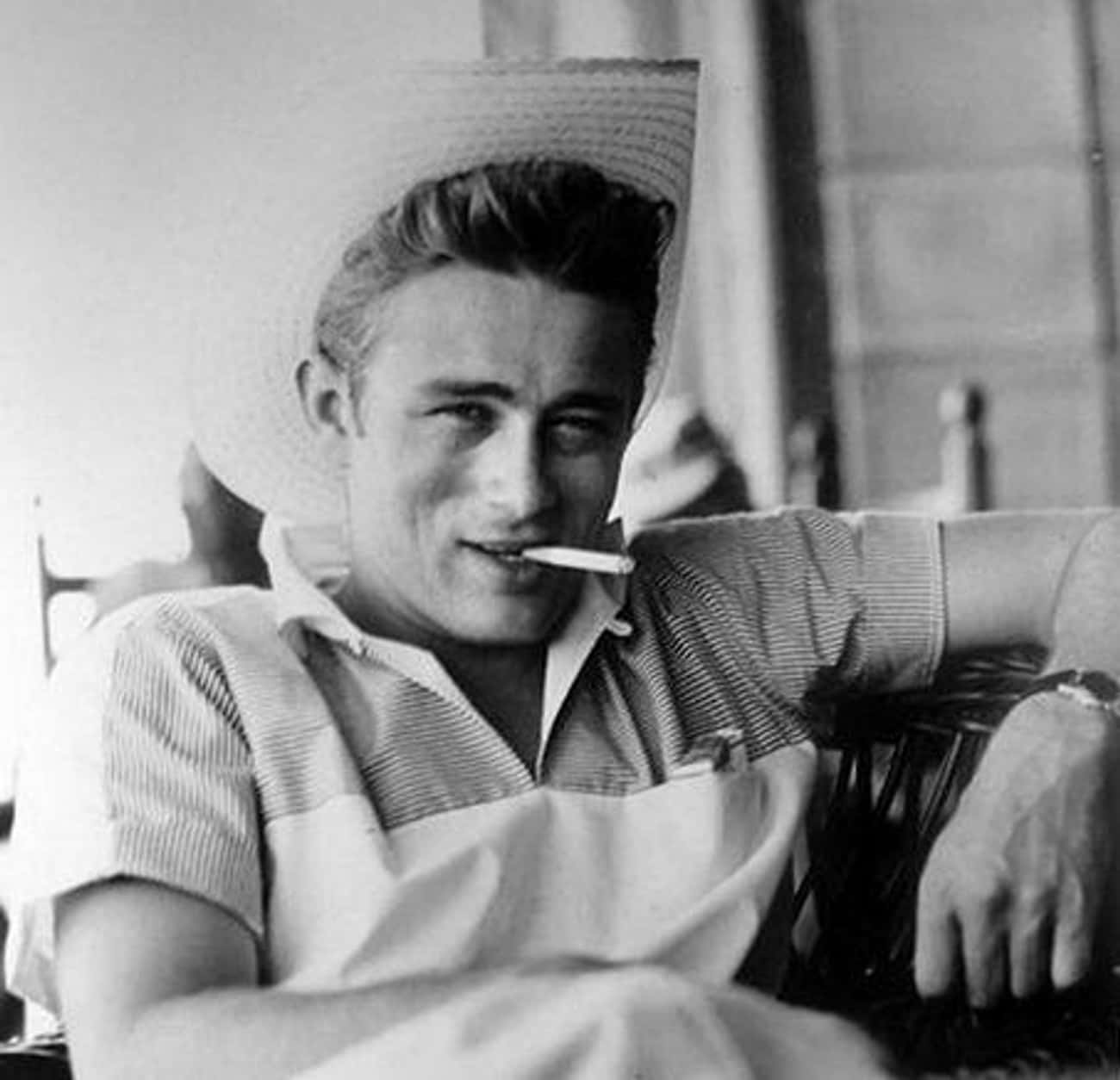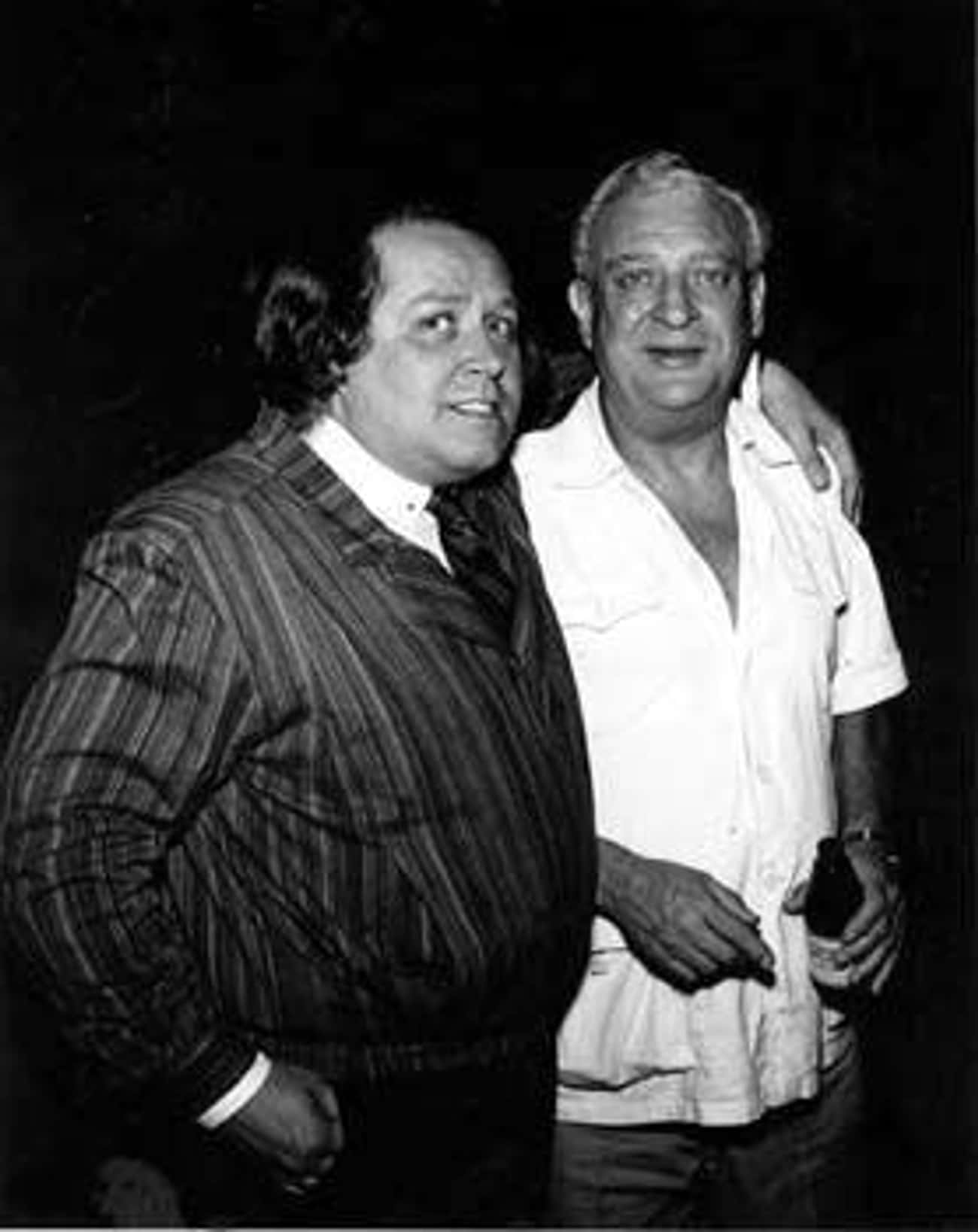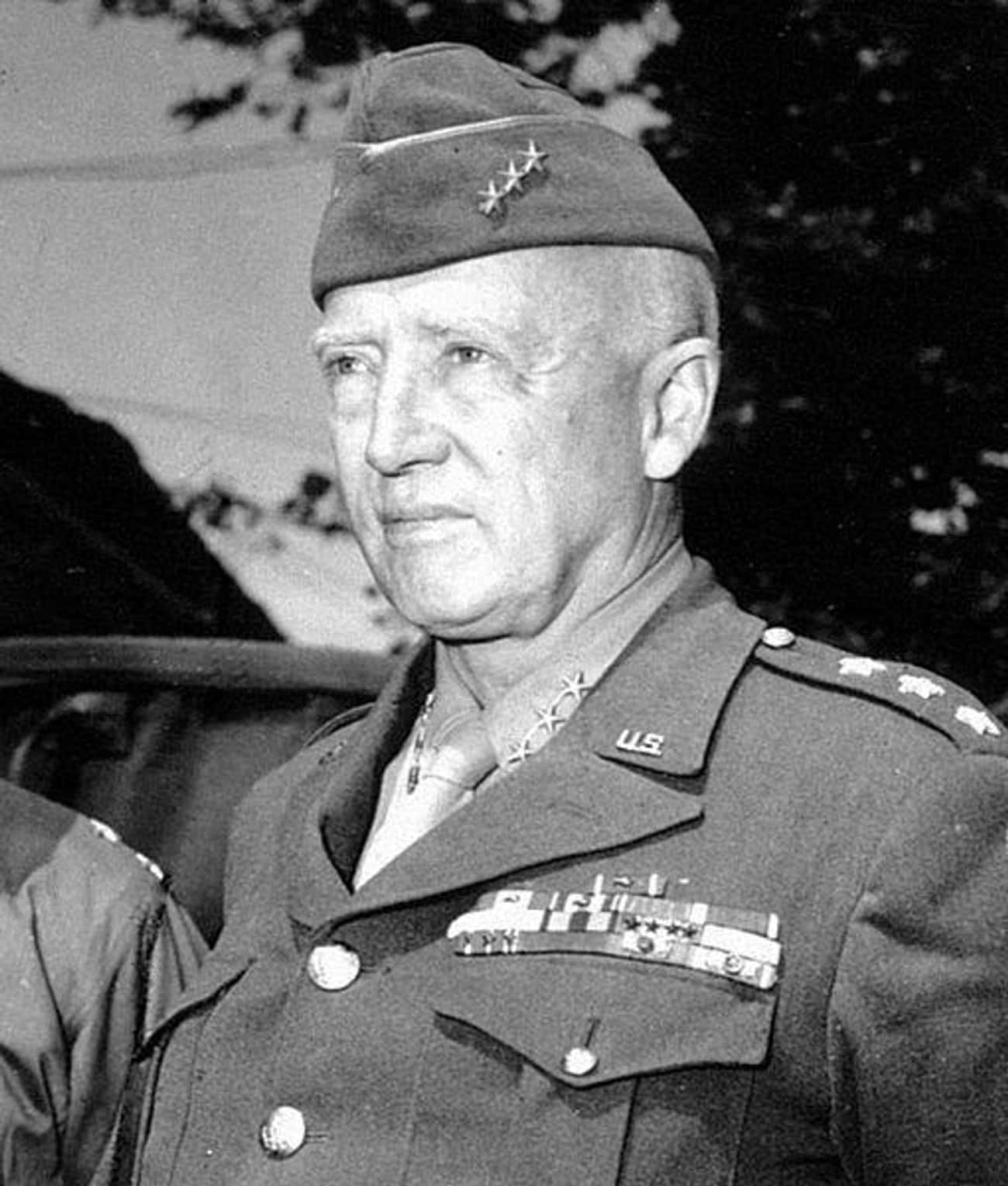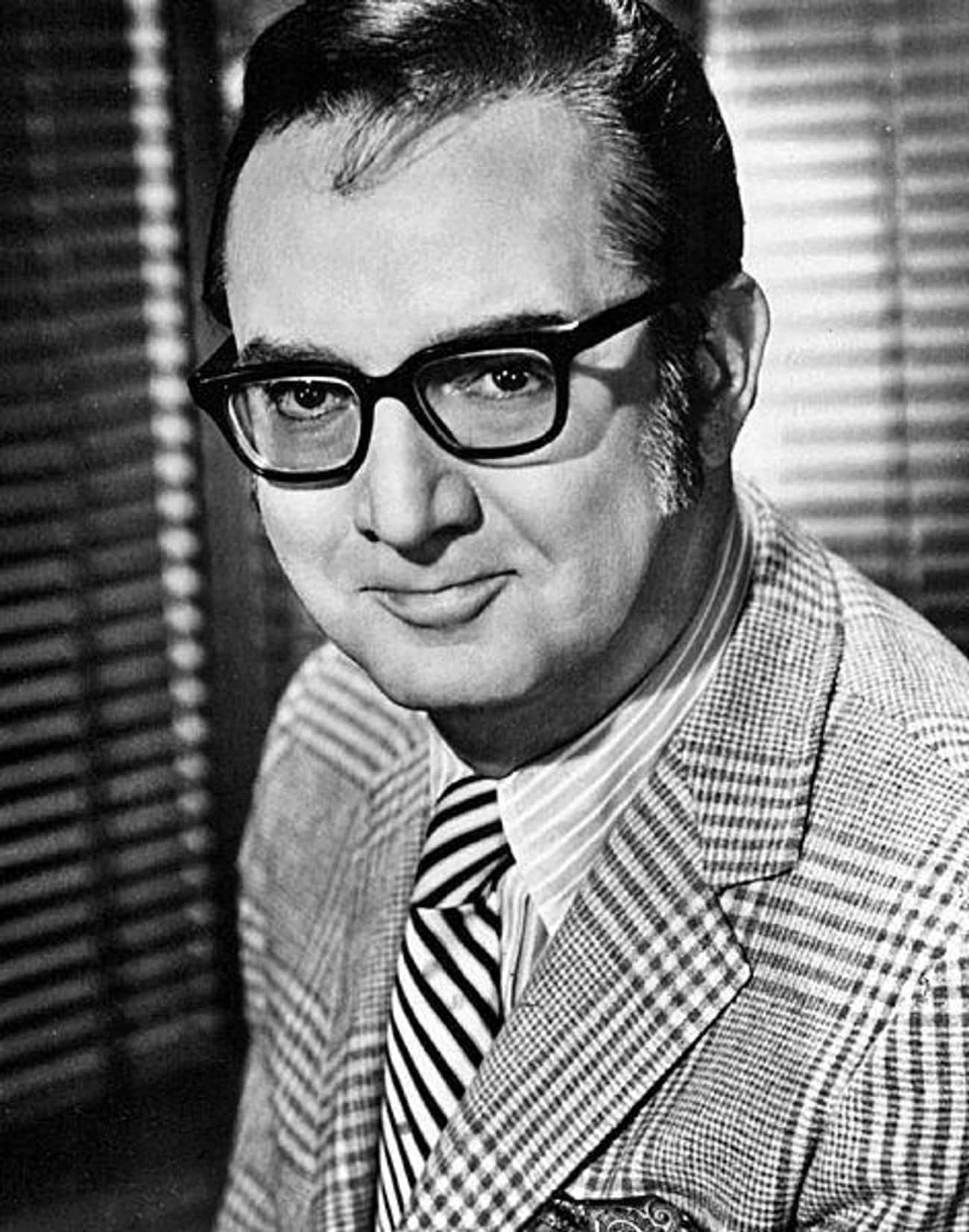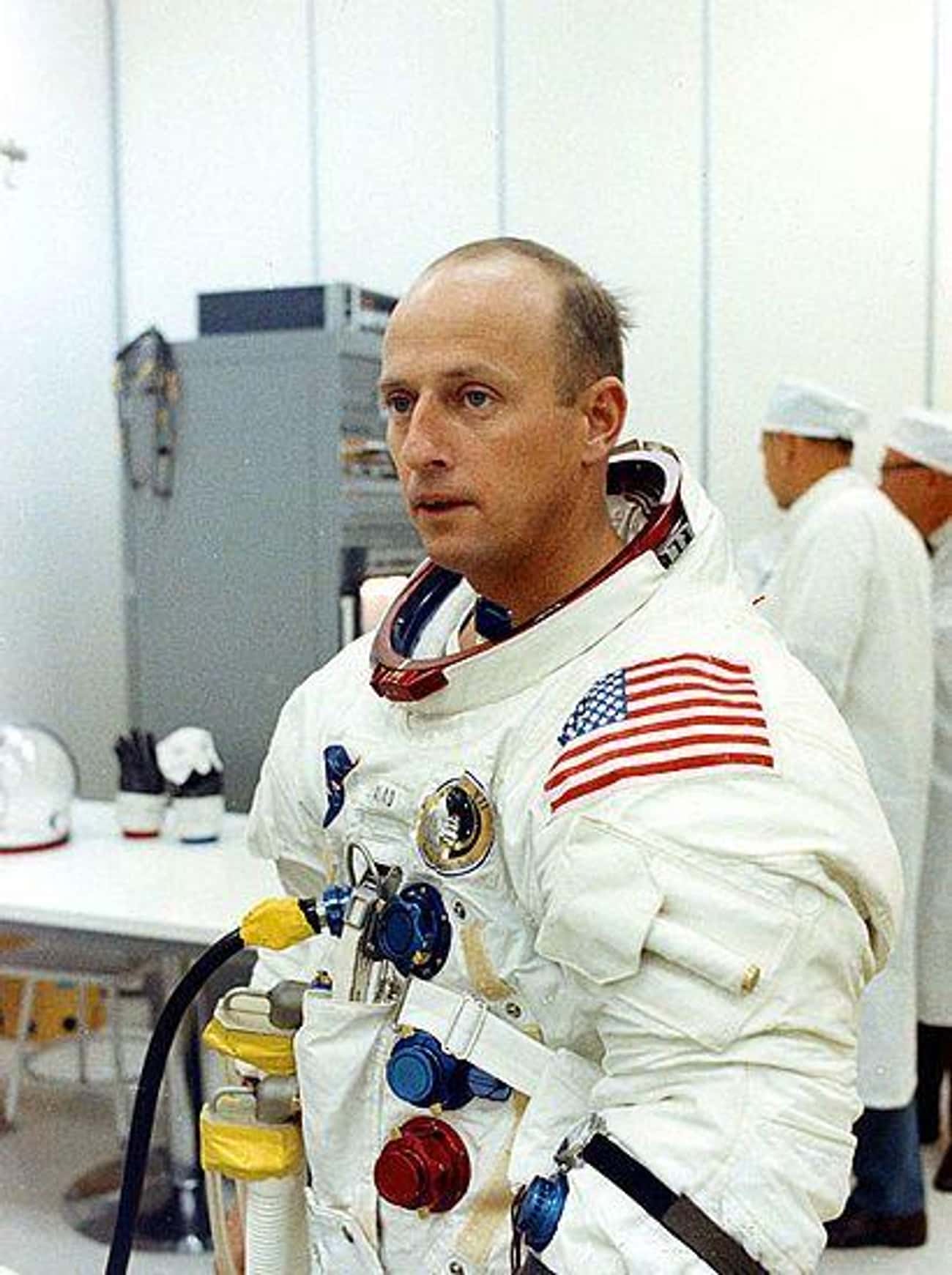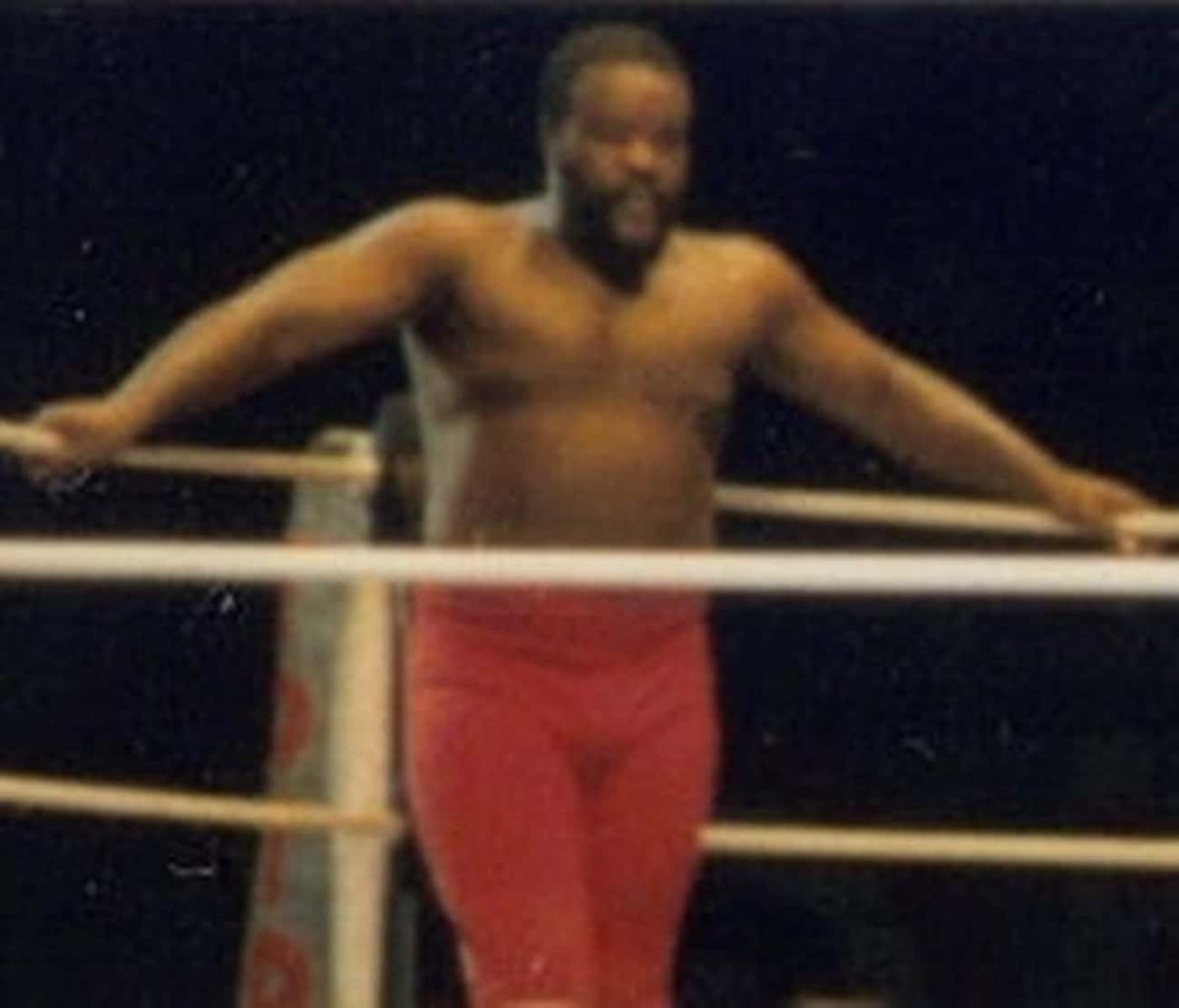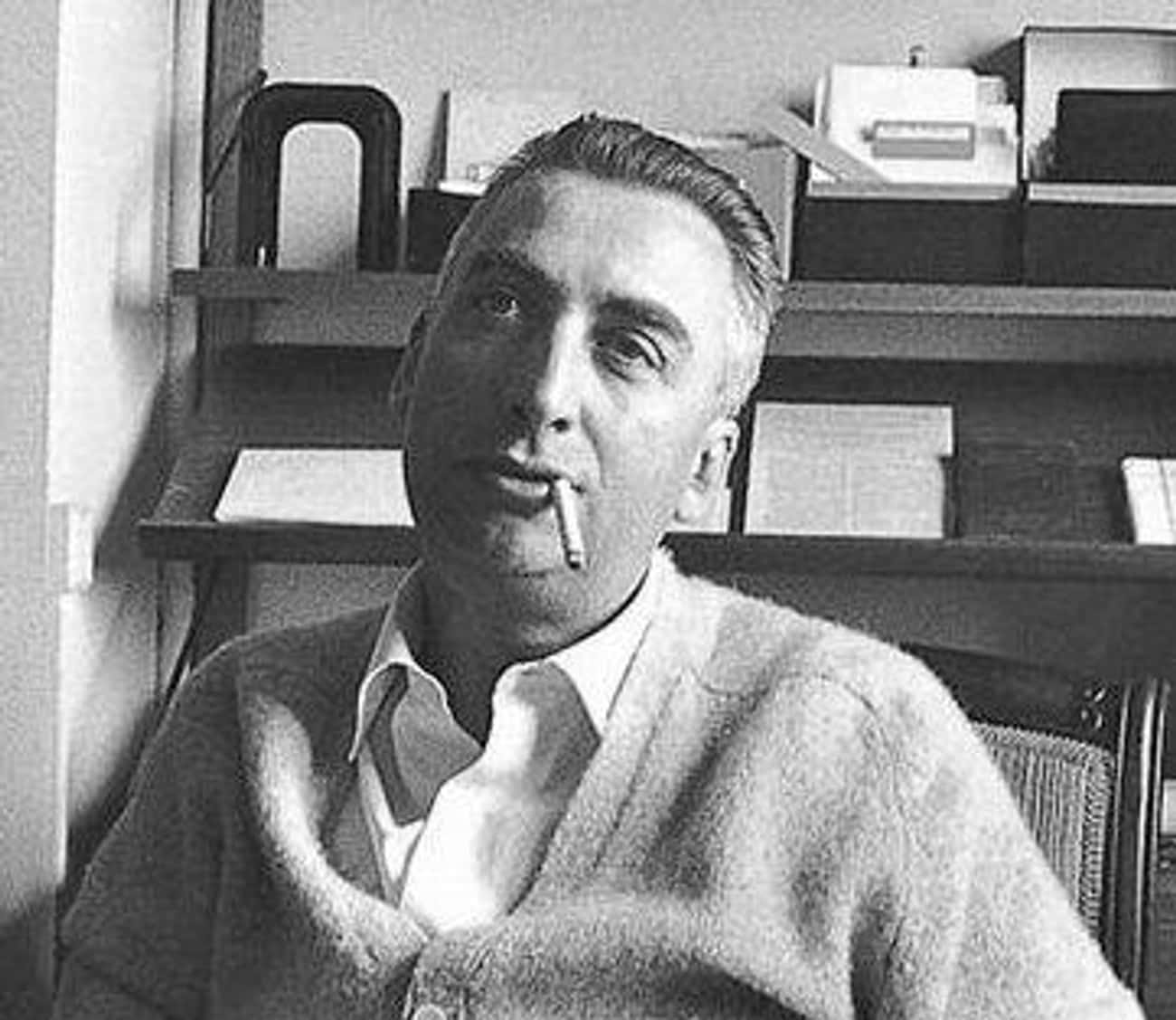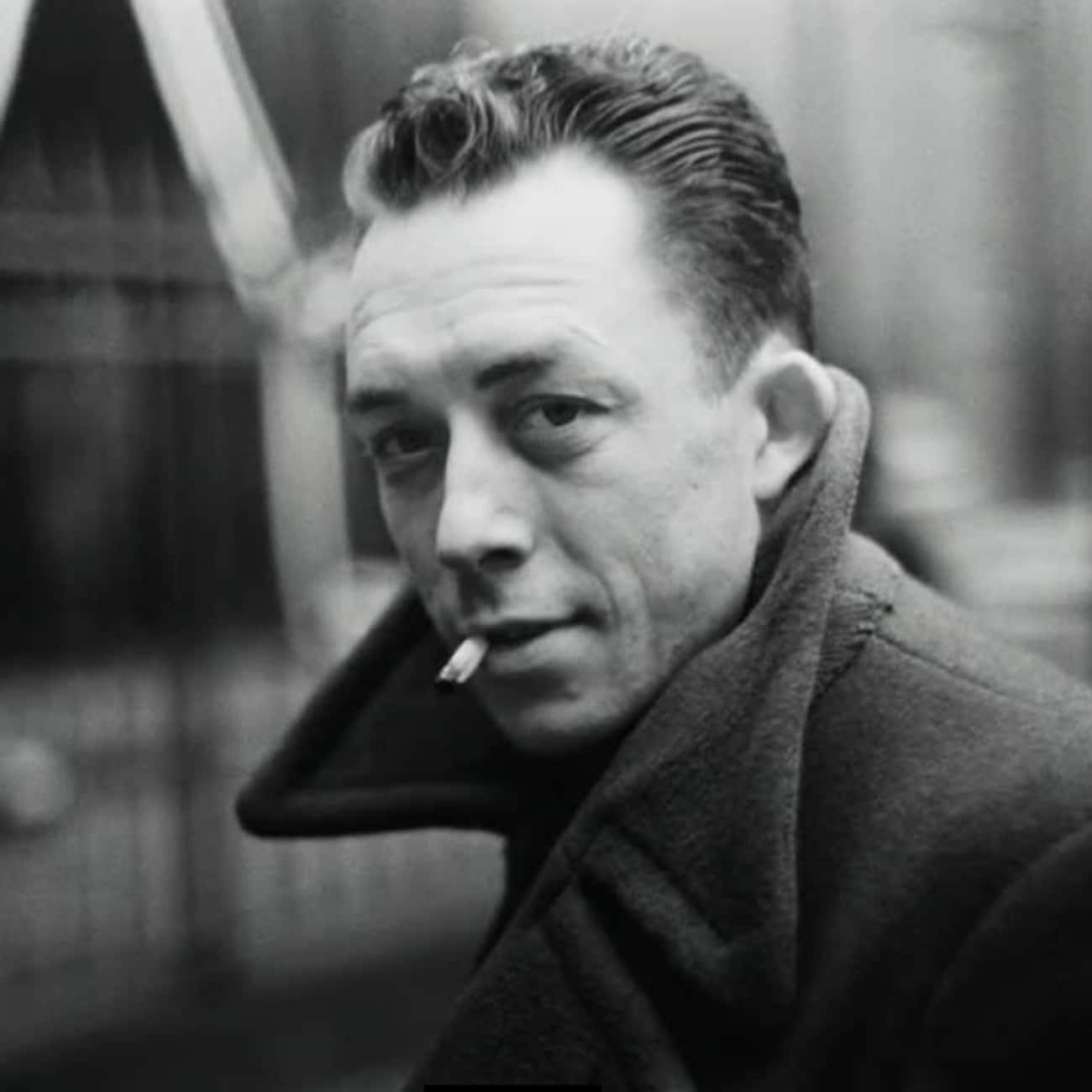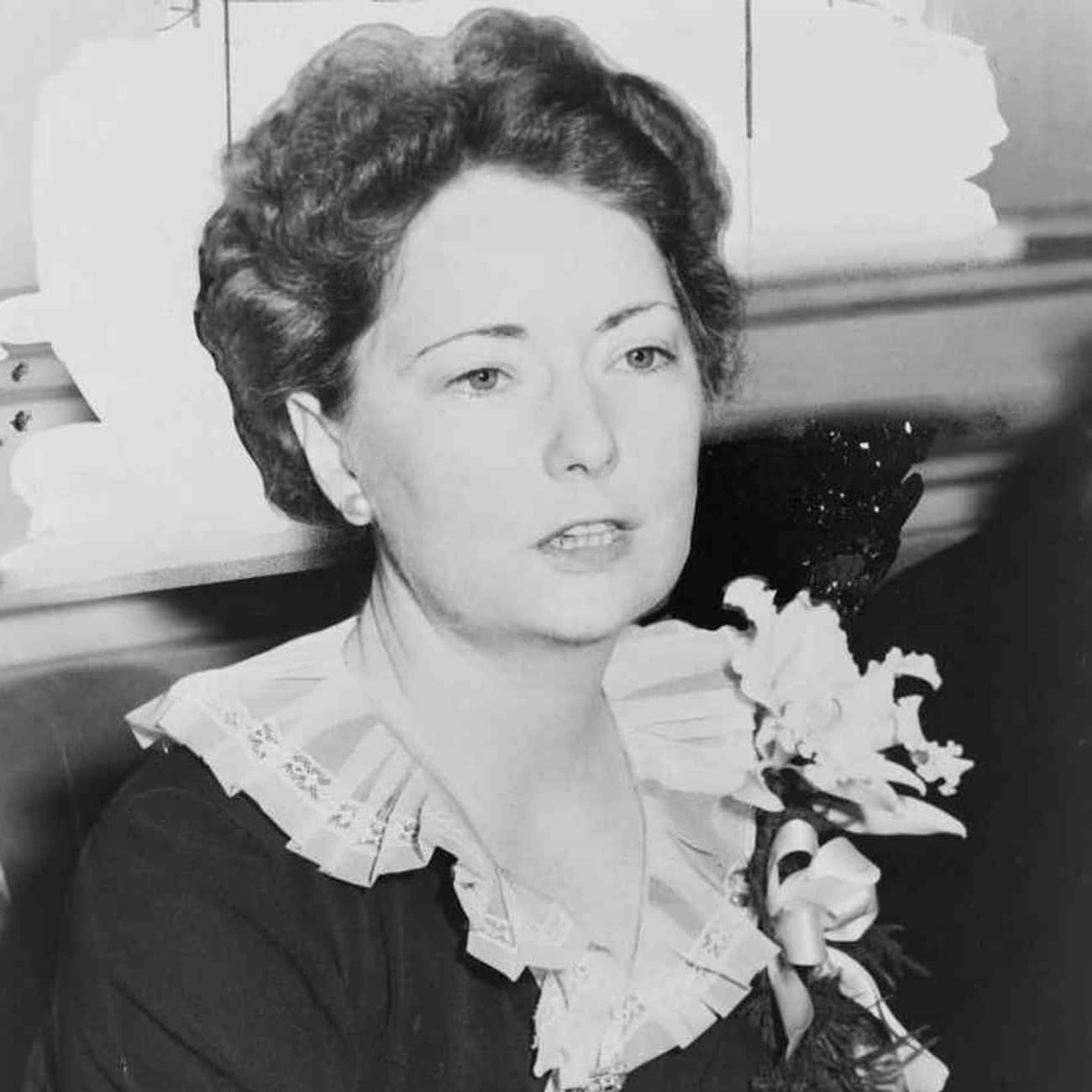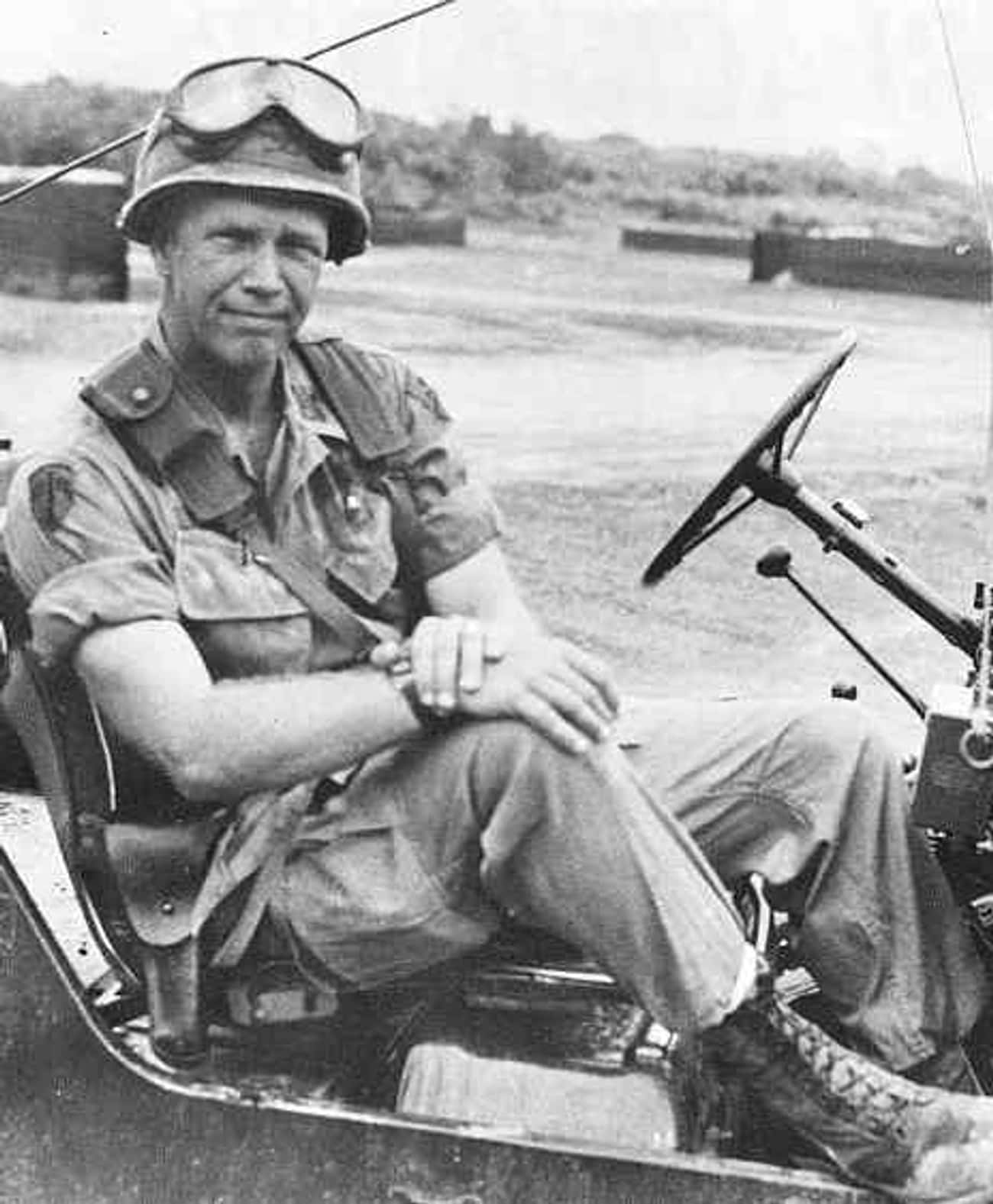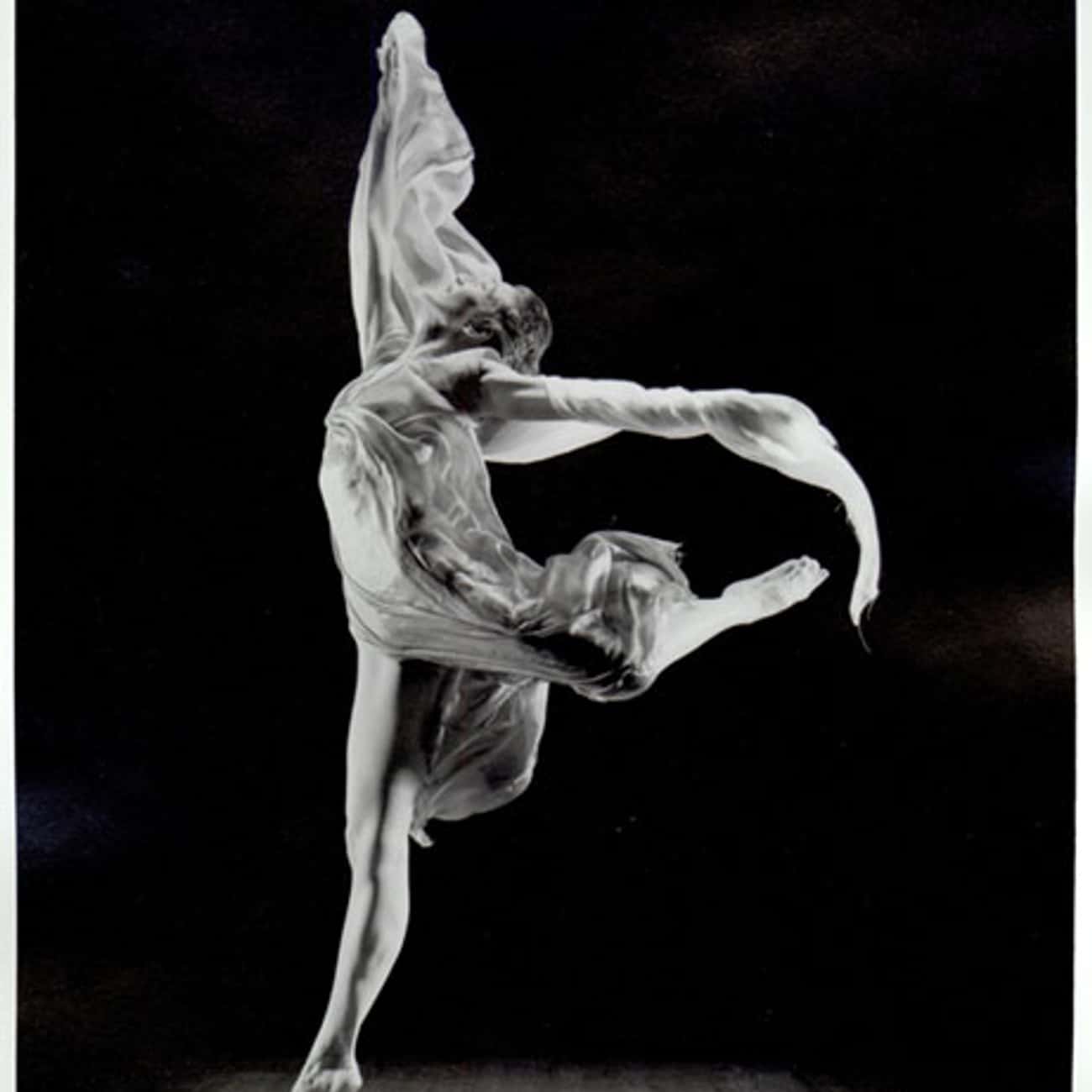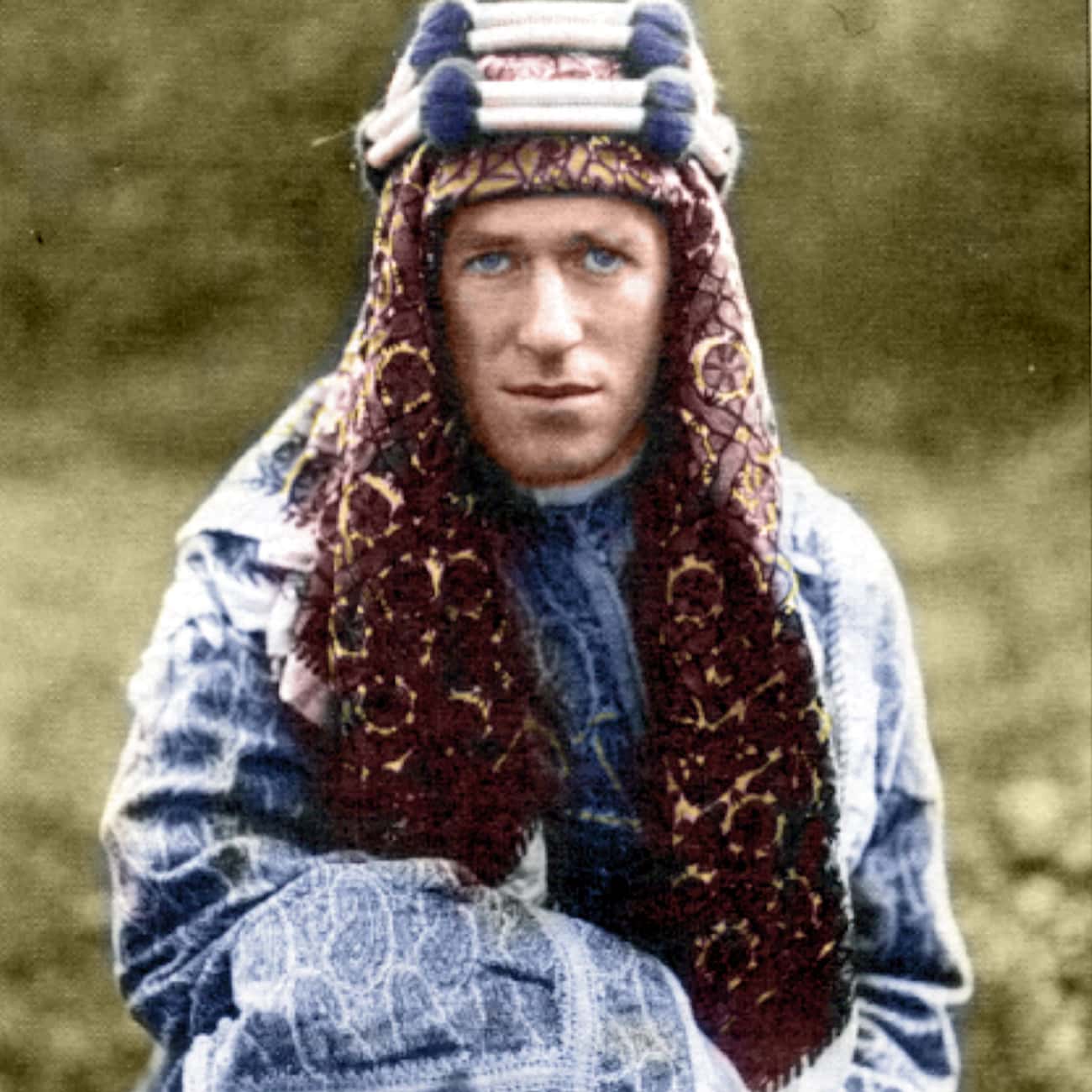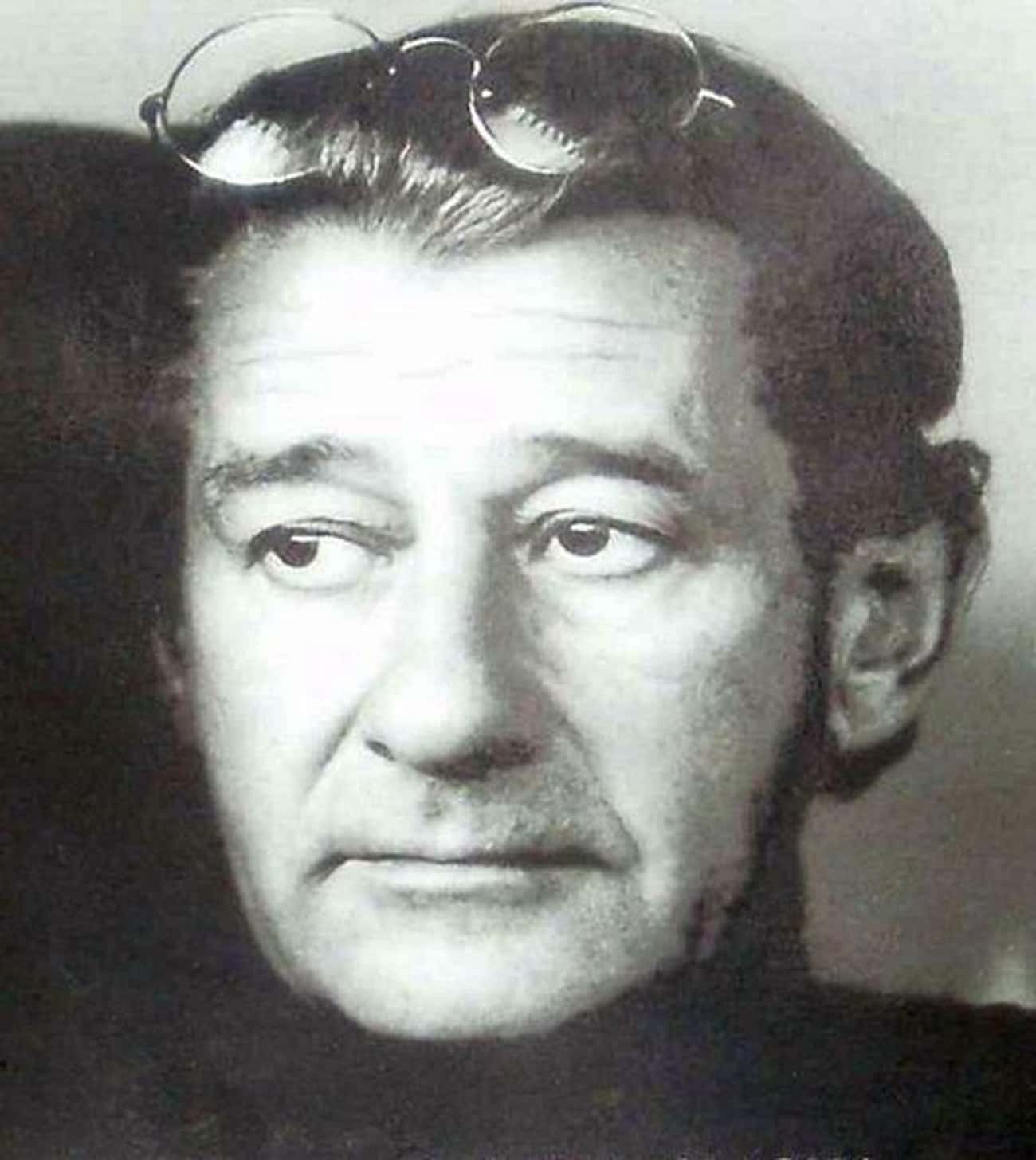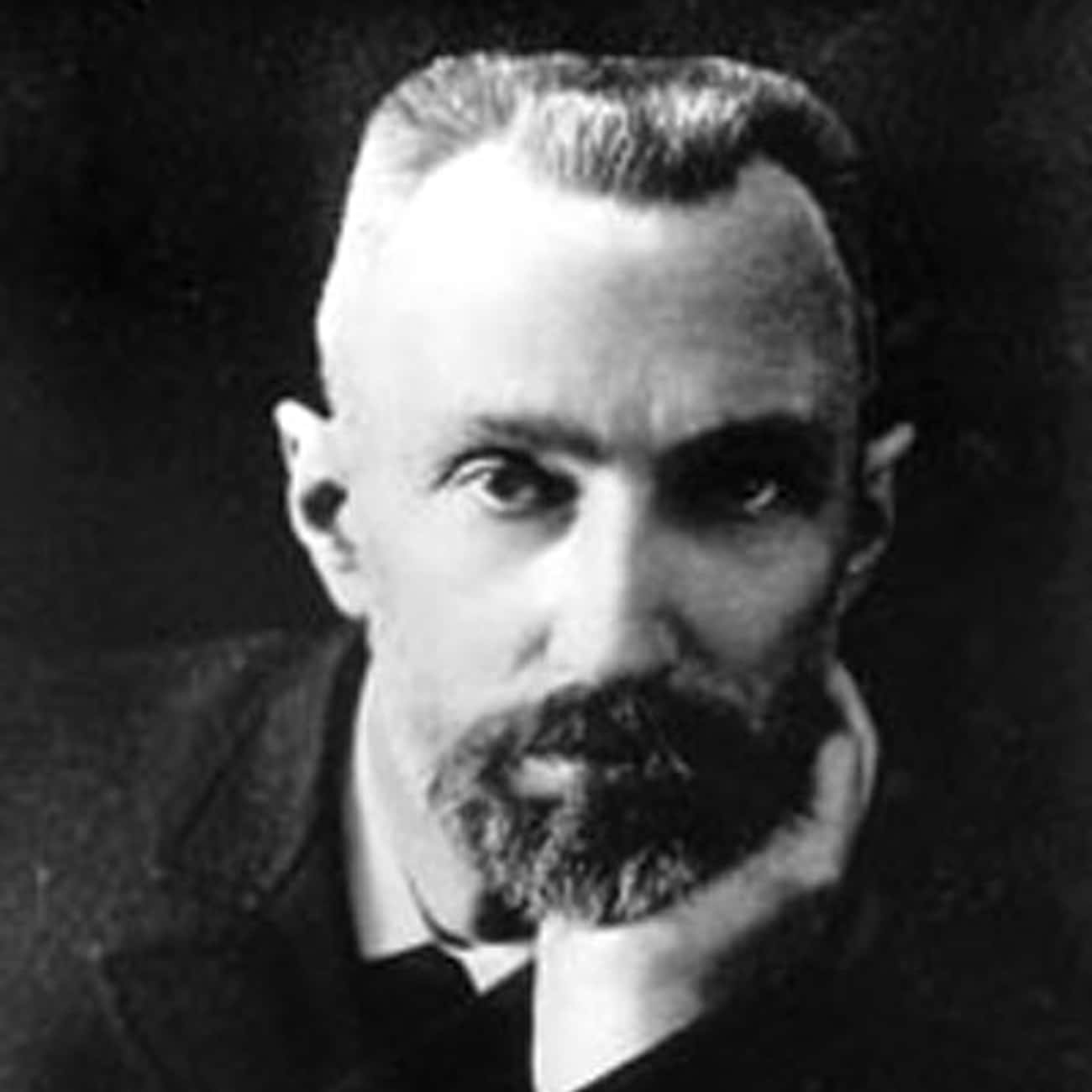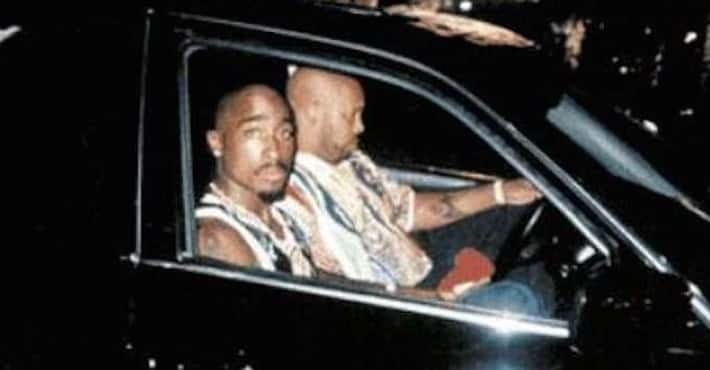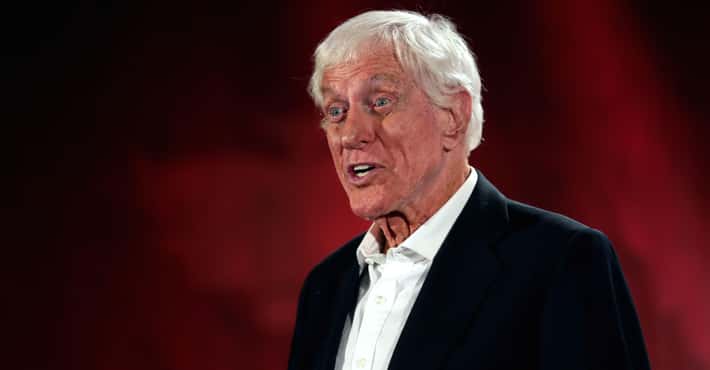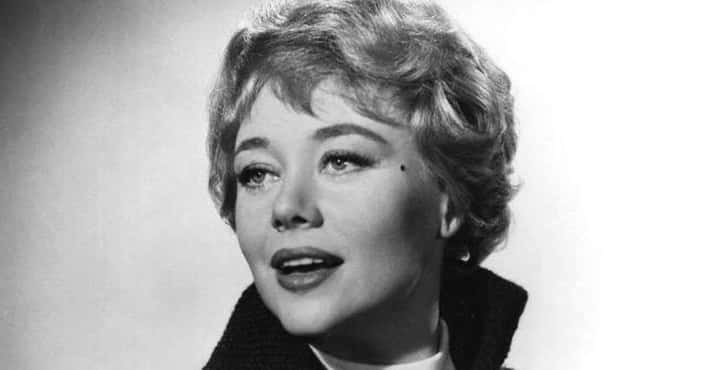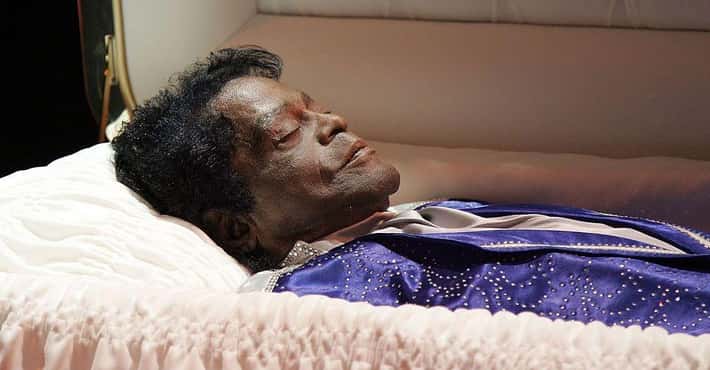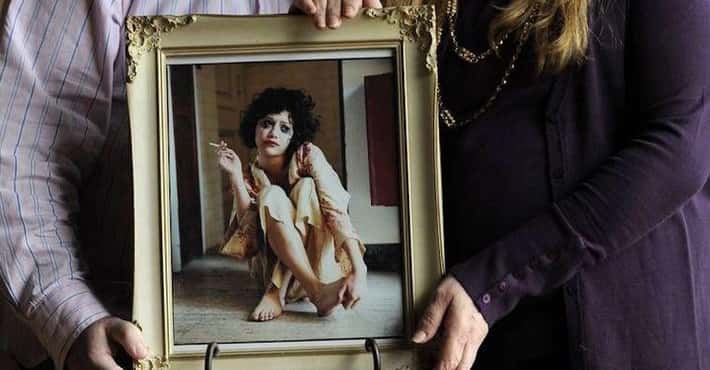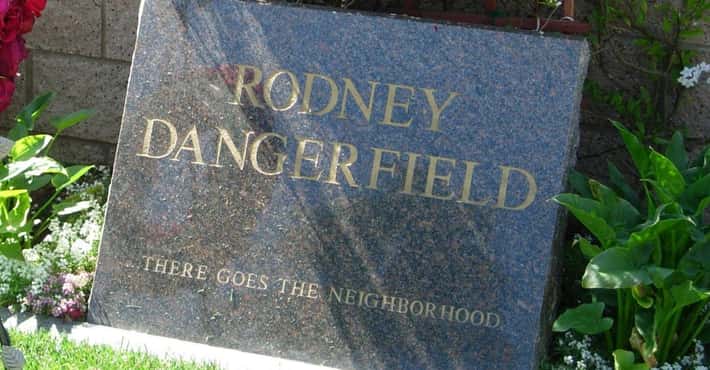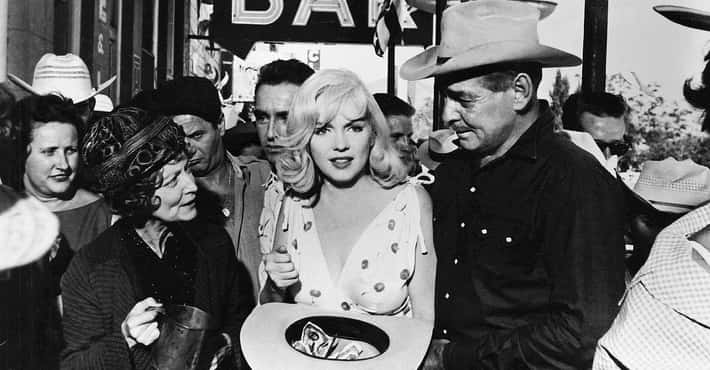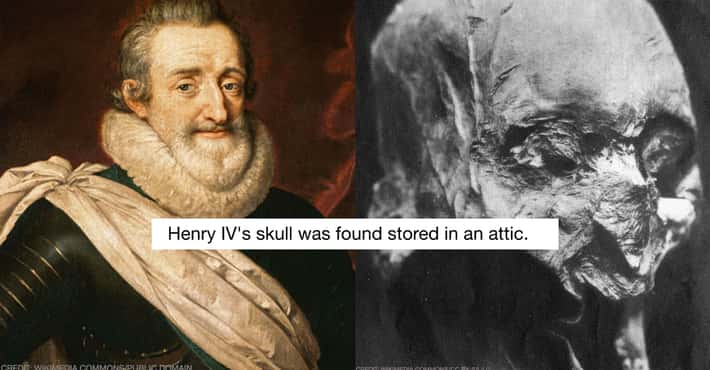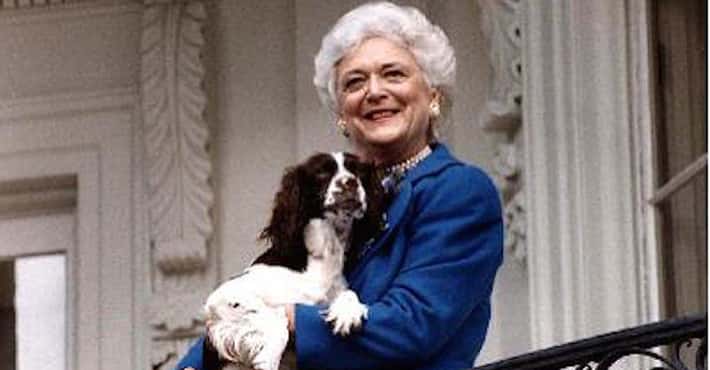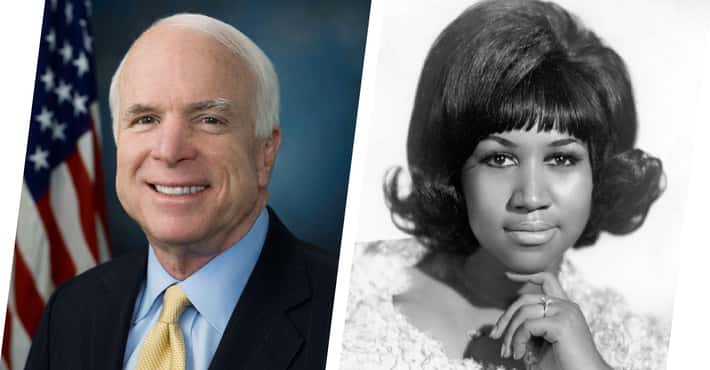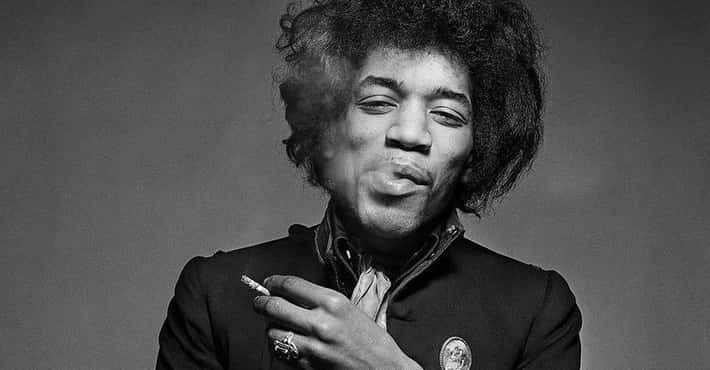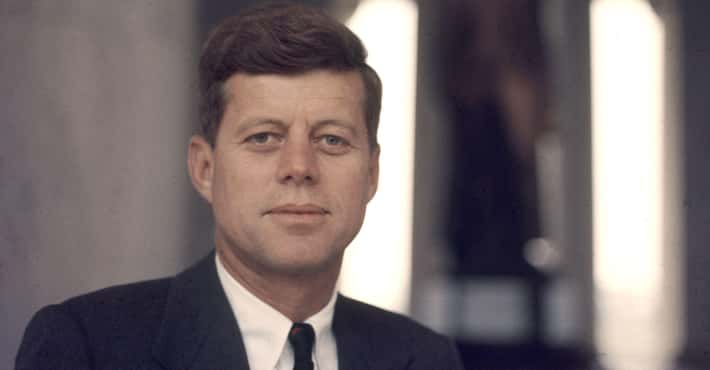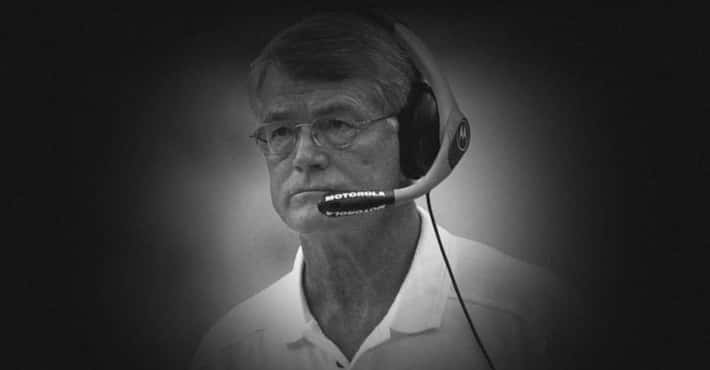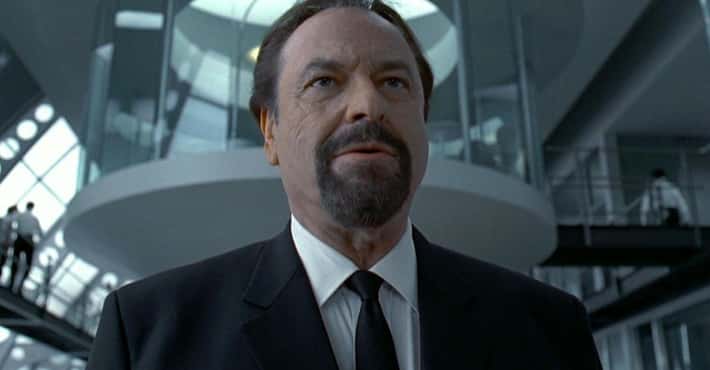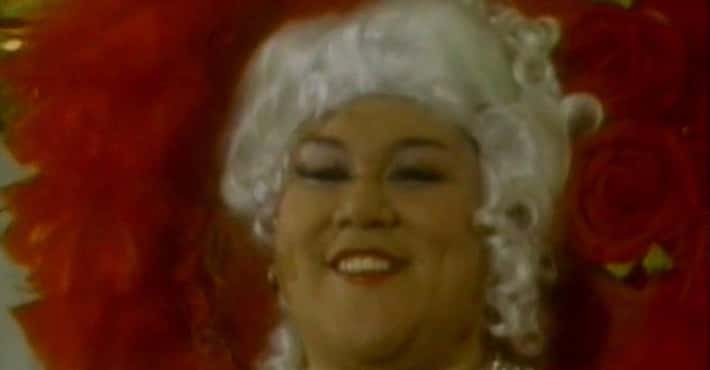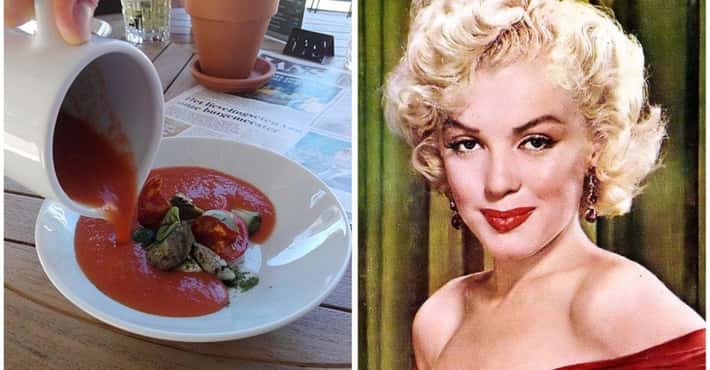Famous People Who Died in Car Accidents
- Photo: Sterling Publications / Wikimedia Commons / Public Domain
Grace Kelly died on September, 14, 1982 when she was 52 years old. She suffered a stoke which caused her to lose control of her vehicle and drive it off a mountainside.
Grace Kelly, a name synonymous with timeless elegance and Hollywood glamor, was an iconic figure in the entertainment industry. Born on November 12, 1929, in Philadelphia, Pennsylvania, Kelly's journey into stardom was propelled by her relentless determination to succeed as an actress. She was part of a wealthy and influential family, but she chose to carve her own path, moving to New York City to study acting at the American Academy of Dramatic Arts. Her career took off quickly; within five years she became one of America's most celebrated film stars. She made her Broadway debut in 1949 and then transitioned to television and film. Throughout her career, she worked with some of the industry's most respected directors, like John Ford and Alfred Hitchcock. Her performances in films such as Dial M for Murder, Rear Window, and To Catch a Thief showcased her range as an actress. In 1954, her role in The Country Girl earned her an Academy Award for Best Actress, solidifying her status in Hollywood. However, at the height of her career, Kelly chose love over fame. She married Prince Rainier III of Monaco in 1956, becoming Princess Grace of Monaco. This marriage marked the end of her acting career, but the beginning of her life as a royal. As a princess, she was deeply involved in philanthropic endeavors, particularly those focused on arts and culture. Despite her untimely death in a car accident in 1982, Grace Kelly's legacy continues to inspire generations, not only for her work in film but also for her humanitarian efforts and her enduring image as a style icon. - Photo: s_bukley / ShutterstockPaul Walker died on November 30, 2013 when he was 40 years old. He was driving with his friend, a professional race car driver, when his 2005 Porsche Carrera GT crashed into a light pole. Walker was the passenger and it is believed that his friend simply lost control of the vehicle.More Paul Walker
- Dig Deeper...Just Like Brian O'Conner, Paul Walker's Life Was Too Fast, Too Furious
- #439 of 574 onThe Best Actors In Film History
- #102 of 200 onThe Coolest Actors Ever
- Photo: Gegodeju / via Wikimedia Commons / CC BY-SA 4.0Diana, Princess of Wales died on August 31, 1997 when she was 36 years old. She was killed in a car accident when her driver, who was accused of being drunk, lost control of the car due to the aggressive pursuit of the paparazzi.
- Dig Deeper...What Charles And Diana’s Relationship Was Actually Like
- And Deeper...345 Famous Cancer Celebrities
- #16 of 227 onThe Most Trustworthy Celebrities In The World
James Dean died September 30, 1955, when he crashed into another car on U.S. Route 466. Somewhat ironically, at the time, he was driving his Porsche 550 Spyder en route to compete in an auto racing event, and had received a speeding ticket less than two hours before the accident. Reports say his death appeared to have been "instantaneous."
More James Dean- Dig Deeper...12 Strange Facts Most Fans Don't Even Know About James Dean
- #213 of 574 onThe Best Actors In Film History
- #71 of 200 onThe Coolest Actors Ever
- Photo: 20th Century Fox / Wikimedia Commons / Public domainJayne Mansfield died in a car accident on June 29, 1967 when she was 34 years old. She suffered severe head trauma after the vehicle she was riding in crashed into a tractor that was in front of them.Jayne Mansfield, born Vera Jayne Palmer on April 19, 1933, was an American actress, singer, and nightclub entertainer who emerged as a major Hollywood sex symbol during the 1950s and early 1960s. She was born in Bryn Mawr, Pennsylvania, and was raised in Dallas, Texas, where she discovered her passion for acting. Despite initial resistance from her parents, Mansfield pursued her dreams, eventually gaining recognition as a leading lady in films like The Girl Can't Help It and Will Success Spoil Rock Hunter? Her blonde bombshell image, comparable to Marilyn Monroe, made her a popular figure in the media. Mansfield's life was not just about glamour and fame; it also had its fair share of trials and tribulations. After a short-lived marriage to her high school sweetheart, Paul Mansfield, she married bodybuilder Mickey Hargitay, with whom she had three children. Her professional life saw highs and lows, with her popularity waning in the 1960s due to a series of box-office flops. Despite these setbacks, Mansfield remained dedicated to her craft, resorting to stage performances and nightclub acts when film offers became scarce. Her resilience and determination were a testament to her love for performing arts. Tragically, Mansfield's life was cut short at the age of 34 in a car accident in 1967. Despite her untimely demise, her legacy in the entertainment industry is enduring. Her flamboyant lifestyle, tumultuous personal life, and tragic death have kept her in public memory long after her passing. Today, she is remembered as one of the definitive symbols of Hollywood glamour and beauty. Her influence can be seen in the careers of many modern actresses who have cited her as an inspiration. Jayne Mansfield's story is one of both success and tragedy, highlighting the often-unseen struggles behind the glitz and glam of Hollywood stardom.More Jayne Mansfield
- Dig Deeper...From Bombshell Bigger Than Marilyn To A Tragic End At 34, The Rise And Fall Of Jayne Mansfield
- And Deeper...250+ Famous Aries Celebrities
- #298 of 348 onThe Best Actresses In Film History
- Photo: Karlos / flickr / CC-BY-NC 2.0Ryan Dunn died on June 20, 2011 when he was 34 years old. He died in a drunk driving accident. Dunn's blood alcohol level was at 0.196% at the time of his death.Ryan Matthew Dunn (June 11, 1977 – June 20, 2011) was an American stunt performer, comedian, and one of the stars of the MTV reality stunt show Jackass. Dunn rose to fame in the late 1990s as a member of the CKY Crew with his long-time friend, Bam Margera, for their extreme stunts and pranks recorded on camera, which led to the rise of Jackass. Dunn also hosted Homewrecker and Proving Ground, and appeared in the feature films Blonde Ambition and Street Dreams, as well as in Margera's films Haggard and Minghags. Dunn died in a car crash in 2011.More Ryan Dunn
- #4 of 14 onEvery 'Jackass' Crew Member Ranked By Fans
- #36 of 52 onThe Last Known Photos of 52 Famous People
- #12 of 87 onWho Is The Most Famous Ryan In The World?
- Sam Kinison died on April 10, 1992 when he was 38 years old. He was killed in a car accident when a 17 year old drunk driver stuck his car, causing a head-on collision.Samuel Burl Kinison (; December 8, 1953 – April 10, 1992) was an American stand-up comedian and actor. A former Pentecostal preacher, he performed stand-up routines that were most often characterized by an intense style, similar to charismatic preachers, and punctuated by his distinct scream.More Sam Kinison
- #38 of 262 onThe Funniest Stand-Up Comedians Of All Time
- #417 of 560 onPeople We Wish Were Still Alive
- #19 of 36 onWhich Comedian's Death Hit You Hardest?
- Photo: Metaweb (FB) / Public domainDale Earnhardt died on February 18, 2001 at age 49. He died after experiencing severe head trauma due to a car accident in the final lap of the 2001 Daytona 500.Ralph Dale Earnhardt (April 29, 1951 – February 18, 2001) was an American professional auto racing driver and team owner, known for his involvement in NASCAR stock car racing. He began his career in 1975 in the World 600 as part of the Winston Cup Series. Regarded as one of the most significant drivers in NASCAR history, Earnhardt won a total of 76 Winston Cup races over the course of his career, including the 1998 Daytona 500. He also earned seven NASCAR Winston Cup championships, tying for the most all-time with Richard Petty. His aggressive driving style and success at the restrictor plate tracks earned him the nicknames "Ironhead", "The Intimidator", "The Man in Black", and "Mr. Restrictor Plate". In February 2001, Earnhardt died due to injuries sustained in a collision during the final lap of the Daytona 500, an event that was widely lamented in the racing industry. Earnhardt has been inducted into numerous halls of fame, including the NASCAR Hall of Fame inaugural class in 2010.More Dale Earnhardt
- Dig Deeper...335+ Famous Taurus Historical Figures
- #169 of 560 onPeople We Wish Were Still Alive
- #108 of 118 onThe All Time Ugliest Athletes
- Photo: Metaweb (FB) / Fair useRandy Savage died in a car accident on May 20, 2011 when he was 58 years old. He had a heart attack while he was driving and lost control of his vehicle. The heart attack was his actual cause of death.More Randy Savage
- #118 of 182 onWhich Actor Would You Bring Back for One Final Movie?
- #2 of 80 onThe Best WWE Superstars of the '80s
- #141 of 182 onThe All-Time Greatest Action Stars
- Photo: Keith Allison / Wikimedia Commons / CC BY-SA 2.0St. Louis Cardinals prospect Oscar Taveras died on October 26th, 2014, in a car crash that also killed his girlfriend.Oscar Francisco Taveras was a Dominican-Canadian professional baseball outfielder who played one season for the St. Louis Cardinals of Major League Baseball. Known as "El Fenómeno" in the Dominican Republic, the Cardinals signed him at age 16 in 2008 as an international amateur free agent and he made his MLB debut in 2014. Over six minor league seasons, he batted .321 with a .519 slugging percentage. He played all three outfield positions while spending most of the time in center field. With prodigious batting skills, Taveras was a consensus top-five minor league prospect in 2013 and 2014. He elicited comparisons to former MLB outfielder and fellow Dominican Vladimir Guerrero – with a powerful and smooth, balanced stroke, Taveras successfully hit pitches well outside of the strike zone. Also similar to Guerrero, he possessed a strong and accurate throwing arm. The outfielder was the recipient of a litany of awards and won batting titles in two minor leagues, including hitting .386 for the Midwest League title in 2011. The next year, he won the Texas League batting title and was the Texas League Player of the Year and Cardinals organization Player of the Year.
- Photo: Metaweb (FB) / Fair useRobert David "Bob" Simon (May 29, 1941 – February 11, 2015) was an American television correspondent for CBS News. During his career, he covered crises, war, and unrest in 67 countries. Simon reported the withdrawal of American troops from Vietnam, the Israeli-Lebanese Conflict in 1982, and the student protests in China's Tiananmen Square in 1989. During the Persian Gulf War in 1991, he and four of his TV crew were captured and imprisoned by Iraq for 40 days. He published a book about the experience titled "Forty Days." He became a regular correspondent for CBS's 60 Minutes in 1996 and, in 1999, for 60 Minutes II. At the time of his death in an auto accident, he served as 60 Minutes senior foreign correspondent. Simon is described as having been "a giant of broadcast journalism" by CBS News President David Rhodes, and is recognized as one of the few journalists who have covered most of the major overseas conflicts since 1969. For his extensive reporting over a 47-year career, he earned more than 40 major awards, including the Overseas Press Club award and 27 Emmy Awards for journalism.On February 11, 2015, Simon was severely injured in a car accident in Manhattan, New York. He was transported to St. Luke's–Roosevelt Hospital, where he was pronounced dead.
- Photo: AriolaJohann Hölzel (German: [ˈjoːhan hans ˈhœlt͡sl̩]; 19 February 1957 – 6 February 1998), better known by his stage name Falco, was an Austrian singer and songwriter.Falco had several international hits, "Rock Me Amadeus", "Der Kommissar", "Vienna Calling", "Jeanny", "The Sound of Musik", "Coming Home (Jeanny Part II, One Year Later)", and posthumously "Out of the Dark". "Rock Me Amadeus" reached No. 1 on the Billboard charts in 1986, making him the only artist whose principal language was German to score a vocal number-one hit in the United States (Bert Kaempfert reached No. 1 in January 1961 with the instrumental "Wonderland by Night"). According to his estate, he has sold 20 million albums and 40 million singles, which makes him the best-selling Austrian singer of all time.More Falco
- #223 of 296 onThe Greatest Musical Artists of the '80s
- #171 of 204 onThe Greatest Male Pop Singers Of All Time
- #610 of 864 onThe 250+ Greatest Rock Bands Of All Time, Ranked
- Photo: Husnock / Wikimedia Commons / Public DomainGeorge S. Patton died on December 21, 1945 when he was 60 years old. He died after being involved in a car accident while on his way to a hunting trip with his friends.George Smith Patton Jr. (November 11, 1885 – December 21, 1945) was a General of the United States Army who commanded the U.S. Seventh Army in the Mediterranean theater of World War II, and the U.S. Third Army in France and Germany following D-Day: the Allied invasion of Normandy in June 1944. Born in 1885 to a family with an extensive military background that spanned both the United States and Confederate States armies, Patton attended the Virginia Military Institute and the U.S. Military Academy at West Point. He studied fencing and designed the M1913 Cavalry Saber, more commonly known as the "Patton Saber", and was sufficiently skilled in the sport of modern pentathlon to compete in the 1912 Summer Olympics in Stockholm, Sweden. Patton first saw combat during the Pancho Villa Expedition in 1916, taking part in America's first military action using motor vehicles. As part of the newly formed United States Tank Corps of the American Expeditionary Forces he saw action in World War I, commanding the U.S. tank school in France before being wounded while leading tanks into combat near the end of the war. In the interwar period, Patton remained a central figure in the development of the Army's armored warfare doctrine, serving in numerous staff positions throughout the country. Rising through the ranks, he commanded the 2nd Armored Division at the time of the American entry into World War II. Patton led U.S. troops into the Mediterranean theater with an invasion of Casablanca during Operation Torch in 1942, and soon established himself as an effective commander through his rapid rehabilitation of the demoralized U.S. II Corps. He commanded the U.S. Seventh Army during the Allied invasion of Sicily, where he was the first Allied commander to reach Messina. There he was embroiled in controversy after he slapped two shell-shocked soldiers under his command, and was temporarily removed from battlefield command. He then was assigned a key role in Operation Fortitude, the Allies' disinformation campaign for Operation Overlord. Following the invasion of Normandy in June 1944, Patton was given command of the Third Army, which conducted a highly successful rapid armored drive across France. Under his decisive leadership the Third Army took the lead in relieving beleaguered American troops at Bastogne during the Battle of the Bulge, after which his forces drove deep into Nazi Germany by the end of the war. During the Allied occupation of Germany Patton was named military governor of Bavaria, but was relieved over his aggressive statements towards the Soviet Union and trivializing denazification. He commanded the United States Fifteenth Army for slightly more than two months. Severely injured in an auto accident, he died in Germany twelve days later, on December 21, 1945. Patton's colorful image, hard-driving personality and success as a commander were at times overshadowed by his controversial public statements. His philosophy of leading from the front and ability to inspire troops with attention-getting, vulgarity-ridden speeches, such as a famous address to the Third Army, met with mixed receptions, favorably with his troops but much less so among a sharply divided Allied high command. His strong emphasis on rapid and aggressive offensive action proved effective, and he was regarded highly by his opponents in the German High Command. An award-winning biographical film released in 1970, Patton, helped solidify his image as an American folk hero.
- Photo: Wikimedia Commons / Public DomainSteve Allen died on October 30, 2000 when he was 78 years old. He was involved in a minor fender bender earlier in the day, but his death was the result of a heart attack.Stephen Valentine Patrick William Allen (December 26, 1921 – October 30, 2000) was an American television personality, radio personality, musician, composer, actor, comedian, writer, and advocate of scientific skepticism. In 1954, he achieved national fame as the co-creator and first host of The Tonight Show, which was the first late night television talk show. Though he got his start in radio, Allen is best known for his extensive network television career. He gained national attention as a guest host on Arthur Godfrey's Talent Scouts. After he hosted The Tonight Show, he went on to host numerous game and variety shows, including his own The Steve Allen Show, I've Got a Secret, and The New Steve Allen Show. He was a regular panel member on CBS's What's My Line?, and from 1977 until 1981 wrote, produced, and hosted the award-winning public broadcasting show Meeting of Minds, a series of historical dramas presented in a talk format. Allen was a pianist and a prolific composer. By his own estimate, he wrote more than 8,500 songs, some of which were recorded by numerous leading singers. Working as a lyricist, Allen won the 1964 Grammy Award for Best Original Jazz Composition. He also wrote more than 50 books, including novels, children's books, and books of opinions, including his final book, Vulgarians at the Gate: Trash TV and Raunch Radio (2001). In 1996 Allen was presented with the Martin Gardner Lifetime Achievement Award from the Committee for Skeptical Inquiry (CSICOP). He has two stars on the Hollywood Walk of Fame and a Hollywood theater named in his honor.More Steve Allen
- #18 of 124 onThe Best Talk Show Hosts Of Daytime, Late Night, and All Time
- #10 of 35 onThe All-Time Greatest Late Night Talk Show Hosts
- #86 of 209 onThe Greatest Stand-Up Comics from the USA
- Photo: NASA / Wikimedia Commons / Public DomainPete Conrad died on July 8, 1999 at age 69. He died as a result of internal bleeding that was caused during a motorcycle accident.Charles "Pete" Conrad Jr. (June 2, 1930 – July 8, 1999) (Captain, USN), was an American NASA astronaut, aeronautical engineer, naval officer and aviator, test pilot, and during the Apollo 12 mission became the third man to walk on the Moon. Conrad was selected in NASA's second astronaut class. He set an eight-day space endurance record along with his Command Pilot Gordon Cooper on his first spaceflight, the Gemini 5 mission. Conrad also commanded the Gemini 11 mission. He became the third human to walk on the moon during the Apollo 12 mission. After Apollo, he commanded Skylab 2, the first crewed Skylab mission. On the mission, he and his crewmates repaired significant launch damage to the Skylab space station. For this, President Jimmy Carter awarded him the Congressional Space Medal of Honor in 1978. After he retired from NASA in 1973, he became a vice president of American Television and Communications Company. He went on to work for McDonnell Douglas, as a vice president. During his tenure, he served as vice president of marketing, senior vice president of marketing, staff vice president of international business development, and vice president of project development. Conrad died on July 8, 1999, from internal injuries sustained in a motorcycle accident.More Pete Conrad
- #69 of 96 onWho Is The Most Famous Peter In The World?
- #66 of 80 onCelebrities with Learning Disabilities
- #48 of 62 on60+ Famous People with Dyslexia
- Photo: Adam.J.W.C. / Wikimedia Commons / CC BY-SA 2.5Junkyard Dog died on June 2, 1998 when he was 45 years old. He died in a car accident after falling asleep at the wheel.Sylvester Ritter (December 13, 1952 – June 1, 1998) was an American professional wrestler and college football player, best known for his work in Mid-South Wrestling and the World Wrestling Federation as the Junkyard Dog (or JYD), a nickname he received while working in a wrecking yard. He was inducted into the WWE Hall of Fame class of 2004. Entering the ring with his trademark chain attached to a dog collar, to the music of Queen's "Another One Bites the Dust," JYD often headlined cards that drew large crowds and regularly sold out the Louisiana Superdome and other major venues, becoming "the first black wrestler to be made the undisputed top star of his promotion".More Junkyard Dog
- #14 of 80 onThe Best WWE Superstars of the '80s
- #53 of 331 onThe Greatest Pro Wrestlers of All Time
- #41 of 144 onRanking The Greatest WWE Hall of Fame Inductees
- Roland Barthes died on March 26, 1980 when he was 64 years old. He died from injuries that he sustained after being struck by a truck one month prior.Roland Gérard Barthes (; French: [ʁɔlɑ̃ baʁt]; 12 November 1915 – 26 March 1980) was a French literary theorist, philosopher, critic, and semiotician. Barthes' ideas explored a diverse range of fields and he influenced the development of many schools of theory, including structuralism, semiotics, social theory, design theory, anthropology, and post-structuralism.
- Photo: flickr / CC0Albert Camus died on January 4, 1960 when he was 46 years old. He died in a car accident. Some believe that his death may have been the result of a Soviet plot.Albert Camus (; French: [albɛʁ kamy] (listen); 7 November 1913 – 4 January 1960) was a French philosopher, author, and journalist. He won the Nobel Prize in Literature at the age of 44 in 1957, the second youngest recipient in history. Camus was born in Algeria to French parents. He spent his childhood in a poor neighbourhood and later studied philosophy at the University of Algiers. He was in Paris when the Germans invaded France during World War II. Camus tried to flee but finally joined the French Resistance where he served as editor-in-chief at Combat, an outlawed newspaper. After the war, he was a celebrity figure and gave many lectures around the world. He married twice but had many extramarital affairs. Camus was politically active. He was part of the Left that opposed the Soviet Union because of its totalitarianism. Camus was a moralist and was leaning towards anarcho-syndicalism. He was part of many organisations seeking European integration. During the Algerian War, he kept a neutral stance advocating for a multicultural and pluralistic Algeria, a position that caused controversy and was rejected by most parties. Philosophically, Camus's views contributed to the rise of the philosophy known as absurdism. He is also considered to be an existentialist, despite his having firmly rejected the term throughout his lifetime.More Albert Camus
- Dig Deeper...Famous Poets And Writers Who Died Of Tuberculosis
- #52 of 508 onThe 500+ Best Writers of All Time
- #902 of 3,183 onThe Most Influential People Of All Time
- Photo: Wikimedia Commons / CC-BYMargaret Mitchell died on August 16, 1949 at age 48. She died after being struck by a drunk driver. She died in the hospital five days after the accident.Margaret Munnerlyn Mitchell (November 8, 1900 – August 16, 1949) was an American novelist and journalist. Mitchell wrote only one novel, published during her lifetime, the American Civil War-era novel Gone with the Wind, for which she won the National Book Award for Most Distinguished Novel of 1936 and the Pulitzer Prize for Fiction in 1937. In more recent years, a collection of Mitchell's girlhood writings and a novella she wrote as a teenager, Lost Laysen, have been published. A collection of articles written by Mitchell for The Atlanta Journal was republished in book form.More Margaret Mitchell
- #176 of 508 onThe 500+ Best Writers of All Time
- #91 of 142 onThe Greatest American Writers of All Time
- #139 of 296 onThe Best Novelists of All Time
- Photo: Metaweb (FB) / Public domainGeorge Smith Patton IV (December 24, 1923 – June 27, 2004) was a major general in the United States Army and the son of World War II General George S. Patton, Jr. He served in the Korean War and the Vietnam War.
- Photo: Metaweb (FB) / Public domainJun Seba (Japanese: 瀬葉 淳, Hepburn: Seba Jun, February 7, 1974 – February 26, 2010), better known by his stage name Nujabes (ヌジャベス, Nujabesu), was a Japanese record producer, DJ, composer and arranger who produced atmospheric instrumental mixes sampling from hip hop and jazz and released three solo studio albums: Metaphorical Music (2003), Modal Soul (2005) and Spiritual State (released posthumously in 2011). Seba was the founder of the independent label Hydeout Productions and released two collection compilations: Hydeout Productions 1st Collection (2003) and 2nd Collection (2007). Additionally, Seba produced the soundtrack for Shinichirō Watanabe's anime series Samurai Champloo (Music Record: Departure and Impression) in 2004. On February 26, 2010, Jun Seba was killed in a traffic collision.More Nujabes
- Photo: Wikimedia Commons / CC-BYBen Alexander died on June 21, 1992 when he was only 20 years old. He died in a drunk driving car accident. His blood alcohol level was at 0.14 at the time of his death.Ben Alexander (13 September 1971 – 21 June 1992) was an Australian rugby league footballer for the Penrith Panthers in the New South Wales Rugby League premiership. He was the younger brother of Australian Rugby League international Greg Alexander. His position of choice was at hooker, or as a five-eighth, or halfback. Ben Alexander made his first grade debut in the 1990 season and was a non-playing reserve in the Panthers inaugural Grand Final winning team in 1991 (the Panthers were captained by his brother Greg). On 21 June 1992, at the age of just 20, Alexander was killed in a car accident in Colyton, a suburb in western Sydney. It was later reported that his blood alcohol level was 0.14, almost three times the legal limit of 0.05. The tragic event occurred on a night that was meant to be one of celebration for the Panthers, as it was the night they had been presented with premiership blazers for their 1991 success.Alexander's death had a profound effect on not only his family, but also the Penrith Panthers. While the Panthers form in their premiership defence was inconsistent prior to 21 June, the Panthers then failed to reach the 1992 Finals series, finishing in 9th place with an 11-11 record. For Ben's older brother, Greg, his death had a longer term effect. Greg missed most of the second half of the season, and endured (by his lofty standards) run of the mill 1993 and 1994 seasons. He then decided he needed time away from Sydney and joined a new club, the New Zealand based Auckland Warriors for both 1995 and 1996, before returning to the Panthers for the inaugural Super League season in 1997. Ben and Greg's brother-in-law, Panthers international second-rower Mark Geyer (who is married to their sister), also decided he needed a change and left the Panthers after 1992 to join the Balmain Tigers in 1993.
- Photo: Metaweb / GNU Free Documentation License
Isadora Duncan
Isadora Duncan died on September 14, 1927 when she was 50 years old. She died after a scarf she was wearing became tangled in the wheel of a convertible in which she was riding. She was thrown from the car and her neck was broken. - Photo: Metaweb (FB) / Fair useLisa Nicole Lopes (May 27, 1971 – April 25, 2002), better known by her stage name Left Eye, was an American hip hop recording artist, and dancer. Lopes was best known as one-third of the R&B girl group TLC, alongside Tionne "T-Boz" Watkins and Rozonda "Chilli" Thomas. Besides rapping and singing background vocals on TLC recordings, Lopes was one of the creative forces behind the group. She received more co-writing credits than the other members. She also designed the outfits and staging for the group and contributed to the group's image, album titles, artworks, and music videos. Through her work with TLC, Lopes won four Grammy Awards.During her short solo career, Lopes scored two US top-ten singles with "Not Tonight" and "U Know What's Up", as well as one UK number-one single with "Never Be the Same Again". She also produced the girl group Blaque, who scored a platinum album and two US top-ten hits. Lopes remains the only member of TLC to have released a solo album. On April 25, 2002, Lopes was killed in a car crash while conducting charity work in Honduras. She swerved off the road to avoid hitting another vehicle, was thrown from her car, and died instantly. She was working on a documentary at the time of her death, which was released as The Last Days of Left Eye and aired on VH1 in May 2007.More Lisa Lopes
- #939 of 1,285 onThe Most Beautiful Women Of All Time
- #142 of 166 onThe 100+ Most Stunning Women of the '90s
- #202 of 234 onThe Greatest Rappers Of All Time
- Photo: Metaweb / GNU Free Documentation LicenseMonisha died on December 5, 1992 when she was 21 years old. She died in a car accident in Alappuzha.Monisha Unni (24 January 1971 – 5 December 1992) was an Indian film actress.Monisha was 16 when she became the youngest actress ever to receive the National Film Award for Best Actress for Nakhakshathangal (1986), her debut film. Along with Sharada, Shobhana, Meera Jasmine, Surabhi Lakshmi and Shobha, Monisha Unni is one of six Malayalam actresses who have won the National Film Award for Best Actress.She died in a car accident near Cherthala, Alappuzha at the age of 21. In her short career, Monisha collaborated with directors such as M. T. Vasudevan Nair, Hariharan, Priyadarshan, Ajayan, Kamal and Sibi Malayil.
- Photo: Metaweb / GNU Free Documentation LicenseT.E. Lawrence died on May 19, 1935 when he was 46 years old. He died in a motorcycle accident after he swerved to avoid hitting two boys on bicycles.Thomas Edward Lawrence, (16 August 1888 – 19 May 1935) was a British archaeologist, army officer, diplomat, and writer. He was renowned for his liaison role during the Sinai and Palestine Campaign and the Arab Revolt against the Ottoman Empire during the First World War. The breadth and variety of his activities and associations, and his ability to describe them vividly in writing, earned him international fame as Lawrence of Arabia, a title used for the 1962 film based on his wartime activities. He was born out of wedlock in Tremadog, Wales in August 1888 to Sarah Junner, a Scottish governess, and Thomas Chapman, an Anglo-Irish nobleman from County Westmeath. Chapman left his wife and family in Ireland to cohabit with Junner; in 1914 he became Sir Thomas Chapman, 7th Baronet. Chapman and Junner called themselves Mr. and Mrs. Lawrence, a name probably adopted from Sarah's likely father; Sarah’s mother had been employed as a servant for a Lawrence family when she became pregnant with Sarah. In 1889, the family moved to Kirkcudbright in Scotland where his brother William George was born, before moving to Dinard in France. In 1896, the Lawrences moved to Oxford, where Thomas attended the high school and then studied history at Jesus College from 1907 to 1910. Between 1910 and 1914, he worked as an archaeologist for the British Museum, chiefly at Carchemish in Ottoman Syria. Soon after the outbreak of war, he volunteered for the British Army and was stationed in Egypt. In 1916, he was sent to Arabia on an intelligence mission and quickly became involved with the Arab Revolt as a liaison to the Arab forces, along with other British officers. He worked closely with Emir Faisal, a leader of the revolt, and he participated in and sometimes led military activities against the Ottoman armed forces, culminating in the capture of Damascus in October 1918. After the war, Lawrence joined the Foreign Office, working with the British government and with Faisal. He was offered both the Victoria Cross and a knighthood but declined both. In 1922, he retreated from public life and spent the years until 1935 serving as an enlisted man, mostly in the Royal Air Force, with a brief stint in the Army. During this time, he published his best-known work Seven Pillars of Wisdom, an autobiographical account of his participation in the Arab Revolt. He also translated books into English and wrote The Mint, which was published posthumously and detailed his time in the Royal Air Force working as an ordinary aircraftman. He corresponded extensively and was friendly with well-known artists, writers, and politicians. For the Royal Air Force, he participated in the development of rescue motorboats. Lawrence's public image resulted in part from the sensationalised reporting of the Arab revolt by American journalist Lowell Thomas, as well as from Seven Pillars of Wisdom. In 1935, Lawrence was fatally injured in a motorcycle accident in Dorset.More T. E. Lawrence
- Dig Deeper...What The History Books Never Told You About Lawrence of Arabia
- And Deeper...320 Famous Leo Celebrities
- #631 of 3,183 onThe Most Influential People Of All Time
- Photo: flickr / CC0Clifford Lee Burton (February 10, 1962 – September 27, 1986) was an American musician and songwriter, best known as the bass guitarist for the American band Metallica from December 1982 until his death in September 1986. Burton joined Metallica in 1982 and performed on the band's first three studio albums: Kill 'Em All, Ride the Lightning and Master of Puppets. He also received a posthumous writing credit for the song "To Live Is to Die" from the band's fourth studio album, ...And Justice for All. On September 27, 1986, Burton died in a bus accident in Kronoberg County, a rural area of southern Sweden, as Metallica toured in support of the Master of Puppets album. He has been recognized as a very influential musician both during his career and after his death, placing ninth in a 2011 Rolling Stone magazine online reader poll recognizing the greatest bassists of all time. He was posthumously inducted into the Rock and Roll Hall of Fame as a member of Metallica on April 4, 2009.More Cliff Burton
- #6 of 154 onThe Best Rock Bassists of All Time
- #447 of 560 onPeople We Wish Were Still Alive
- #31 of 160 onRock Stars Whose Deaths Were The Most Untimely
- Photo: Ralf Liebau / Wikimedia Commons / CC BY-SA 3.0Helmut Newton (born Helmut Neustädter; 31 October 1920 – 23 January 2004) was a German-Australian photographer. He was a "prolific, widely imitated fashion photographer whose provocative, erotically charged black-and-white photos were a mainstay of Vogue and other publications."More Helmut Newton
- #6 of 34 onThe Most Controversial Photographers Of All Time
- #5 of 55 onThe Best Portrait Photographers
- #186 of 195 on195 Celebrities With Gemini Moons
- Photo: flickr / CC0Pierre Curie died on April 19, 1906 when he was 46 years old. He fell in the road and his skull was crushed under the wheel of a horse drawn cart.Pierre Curie ( KEWR-ee, French: [kyʁi]; 15 May 1859 – 19 April 1906) was a French physicist, a pioneer in crystallography, magnetism, piezoelectricity and radioactivity. In 1903, he received the Nobel Prize in Physics with his wife, Marie Skłodowska-Curie, and Henri Becquerel, "in recognition of the extraordinary services they have rendered by their joint researches on the radiation phenomena discovered by Professor Henri Becquerel".More Pierre Curie
- #402 of 3,183 onThe Most Influential People Of All Time
- #299 of 752 onThe Greatest Minds of All Time
- #16 of 61 onWho Is The Most Famous Pierre In The World?


